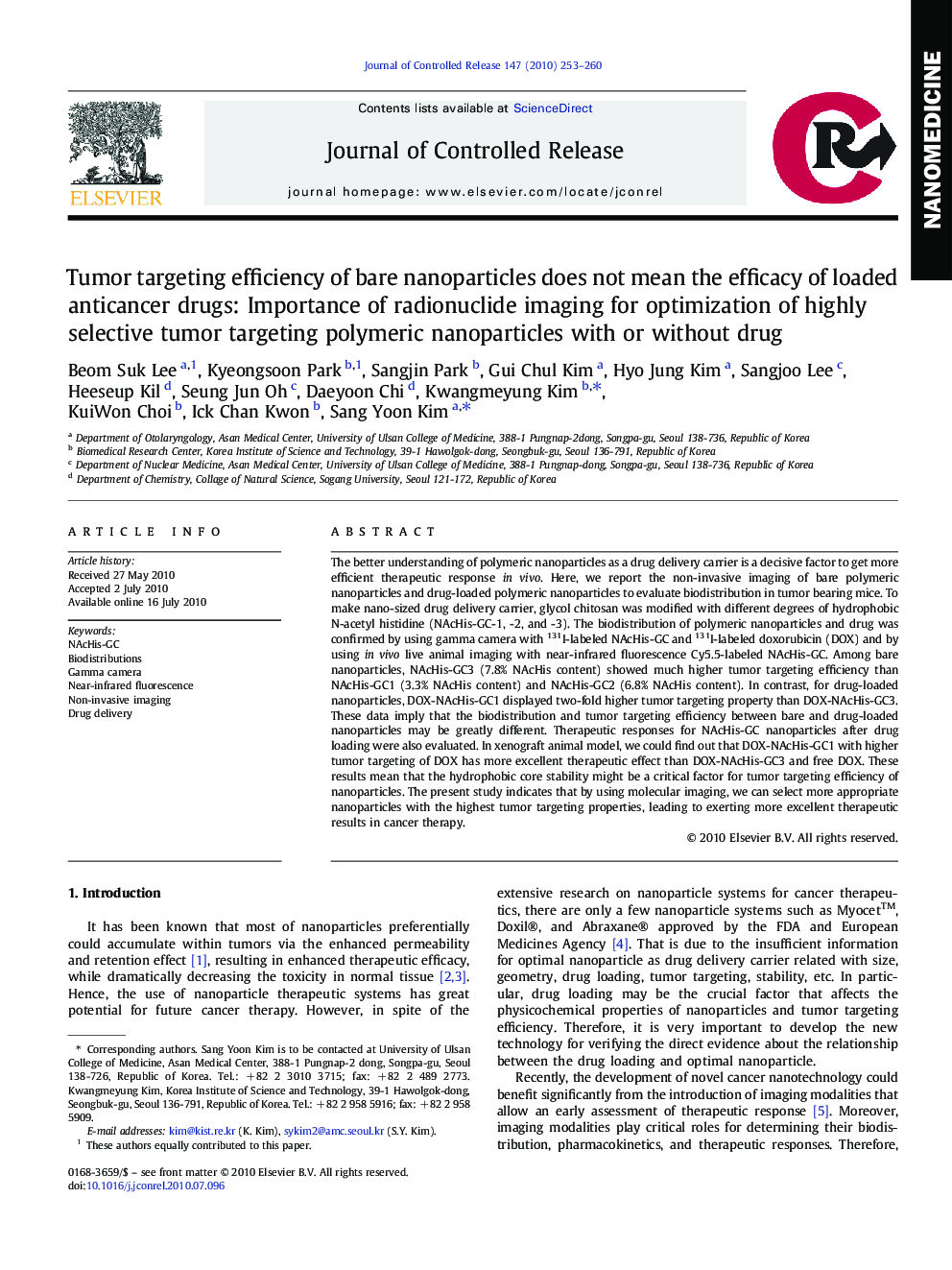| کد مقاله | کد نشریه | سال انتشار | مقاله انگلیسی | نسخه تمام متن |
|---|---|---|---|---|
| 1425520 | 986768 | 2010 | 8 صفحه PDF | دانلود رایگان |

The better understanding of polymeric nanoparticles as a drug delivery carrier is a decisive factor to get more efficient therapeutic response in vivo. Here, we report the non-invasive imaging of bare polymeric nanoparticles and drug-loaded polymeric nanoparticles to evaluate biodistribution in tumor bearing mice. To make nano-sized drug delivery carrier, glycol chitosan was modified with different degrees of hydrophobic N-acetyl histidine (NAcHis-GC-1, -2, and -3). The biodistribution of polymeric nanoparticles and drug was confirmed by using gamma camera with 131I-labeled NAcHis-GC and 131I-labeled doxorubicin (DOX) and by using in vivo live animal imaging with near-infrared fluorescence Cy5.5-labeled NAcHis-GC. Among bare nanoparticles, NAcHis-GC3 (7.8% NAcHis content) showed much higher tumor targeting efficiency than NAcHis-GC1 (3.3% NAcHis content) and NAcHis-GC2 (6.8% NAcHis content). In contrast, for drug-loaded nanoparticles, DOX-NAcHis-GC1 displayed two-fold higher tumor targeting property than DOX-NAcHis-GC3. These data imply that the biodistribution and tumor targeting efficiency between bare and drug-loaded nanoparticles may be greatly different. Therapeutic responses for NAcHis-GC nanoparticles after drug loading were also evaluated. In xenograft animal model, we could find out that DOX-NAcHis-GC1 with higher tumor targeting of DOX has more excellent therapeutic effect than DOX-NAcHis-GC3 and free DOX. These results mean that the hydrophobic core stability might be a critical factor for tumor targeting efficiency of nanoparticles. The present study indicates that by using molecular imaging, we can select more appropriate nanoparticles with the highest tumor targeting properties, leading to exerting more excellent therapeutic results in cancer therapy.
Graphical AbstractFigure optionsDownload as PowerPoint slide
Journal: Journal of Controlled Release - Volume 147, Issue 2, 15 October 2010, Pages 253–260